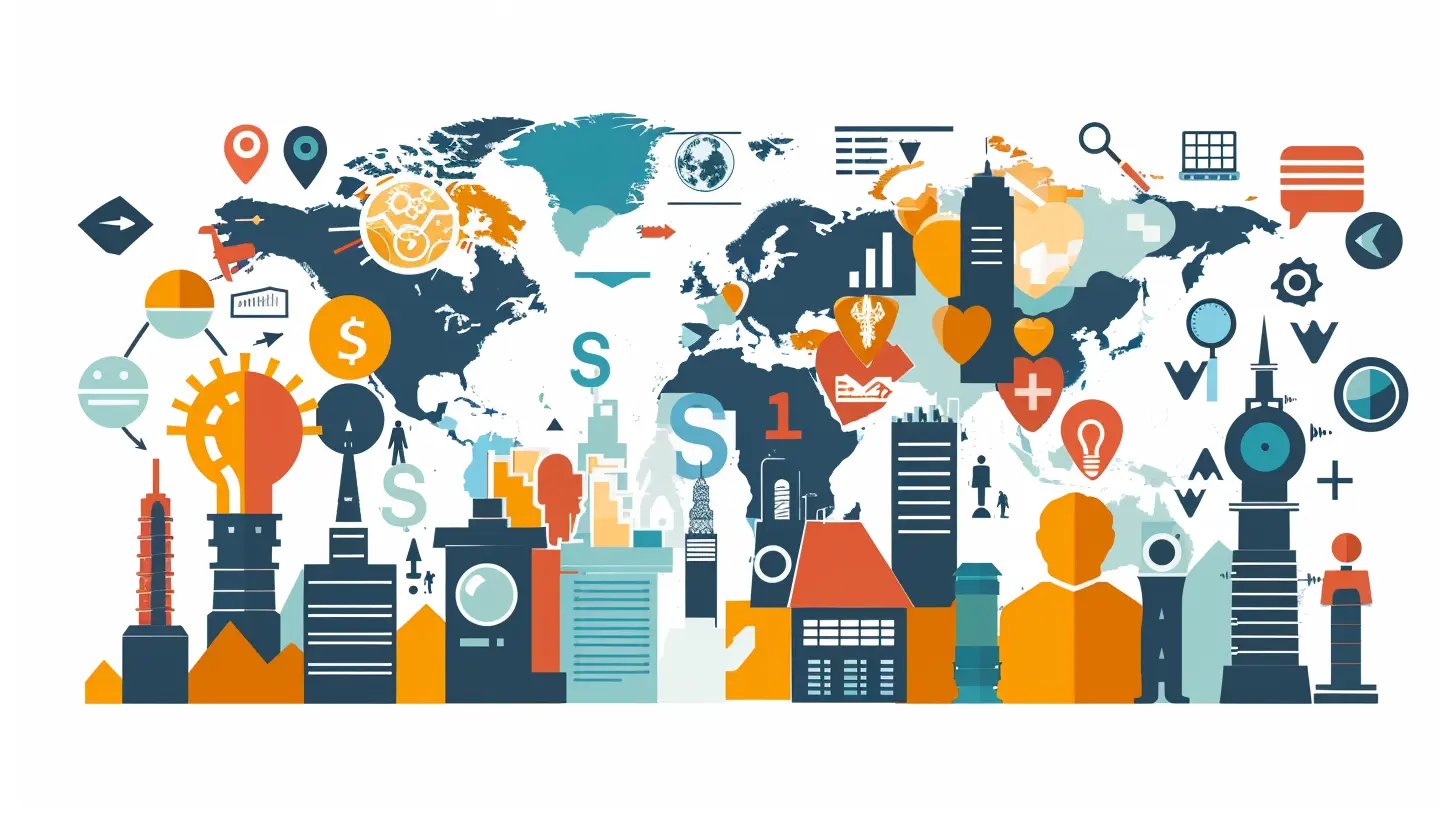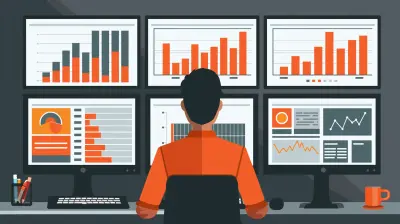Understanding the Competitive Landscape in Global Markets
27 July 2025
If you’ve ever tried expanding your business internationally or looked at competitors overseas, you’ve probably realized that the global market is a whole different beast. It's bigger, more complex, and way more unpredictable than just sticking to your own backyard. Understanding the competitive landscape in global markets isn’t just about knowing who your competitors are — it’s about diving deep into what makes these markets tick.
In this guide, we’re going to break it all down in simple, human language. No fluff. Just real, usable insights on navigating global competition like a pro.
Why Should You Even Care About the Global Market?
First off, let’s address the elephant in the room. Why go global anyway?Well, the world is more connected than ever. Thanks to technology, borders aren’t barriers anymore — they’re just lines on a map. Whether you’re selling eco-friendly clothing or cutting-edge software, chances are someone across the globe wants what you’re offering.
Going global opens up whole new audiences, boosts your brand, and even helps spread risk. If one region dips economically, another might be booming.
But (and it’s a big but), jumping into global markets without understanding who you’re up against or how the game is played? That’s like diving into a chess tournament without knowing the rules. You’ll be outmaneuvered before you even know what hit you.
What Is a Competitive Landscape?
Before we dig deeper, let’s make sure we’re on the same page.The “competitive landscape” is basically a fancy business term for “who’s doing what and how good are they at it.” It’s about mapping out all the players in your industry — direct and indirect competitors, market leaders, emerging disruptors, and so on.
This isn’t just a list of names. It’s about understanding:
- What they offer
- How they price it
- Where they operate
- What makes them unique
- Where they’re winning or struggling
When we say understanding the competitive landscape in global markets, we mean doing this on an international scale. And yeah, it gets a lot trickier.
The Unique Challenges of Global Competition
Let’s not sugarcoat it — global competition is tough. You're dealing with way more variables than at home.Here are some things that can flip the game entirely:
🌍 Cultural Differences
What sells like hotcakes in North America might not even get a second glance in Asia. Cultural values, buying behaviors, colors, slogans — all of it can differ dramatically.Ever heard the story about how Pepsi’s "Come alive with the Pepsi Generation" was (supposedly) mistranslated in China as "Pepsi brings your ancestors back from the grave?" That’s the kind of oops you want to avoid.
📊 Economic Factors
Not all markets are created equal. Exchange rates, inflation, purchasing power — these things seriously impact demand and pricing strategy.🏛️ Regulatory Environments
Business laws vary wildly across countries. What’s legal and standard practice in one place might be a red flag in another. Think taxes, import restrictions, labor laws, data privacy — it's a long list.💡 Local Competition
You’re not just going up against other global giants. Sometimes, your biggest threat is a local player who knows the market inside out and has a loyal customer base.
Mapping Out the Global Playing Field
So, how do you actually analyze the global competitive landscape?Let’s break it down step-by-step.
1. Identify Your Real Competitors
Start with direct competitors — brands offering the same products or services. But don’t stop there. Look at:- Substitute products (e.g., taxis vs. ride-sharing apps)
- Emerging players (startups doing something innovative)
- Adjacent industries (companies that could expand into your niche)
Use tools like:
- Google Search (obviously)
- Market research reports
- Business databases like Crunchbase
- Global marketplaces like Alibaba or Amazon to see what’s trending
2. Analyze Their Strengths and Weaknesses
This is where the real insight lives. Ask yourself:- What are they doing better than you?
- What are they doing worse?
- Where do they stand in terms of pricing, quality, customer service, innovation?
- What’s their global reach?
A SWOT analysis (Strengths, Weaknesses, Opportunities, Threats) comes in handy here. Do one for each major competitor.
3. Understand Their Go-To-Market Strategy
How are your competitors expanding globally? Are they:- Partnering with local companies?
- Setting up regional offices?
- Selling online with localized websites?
- Franchising?
Understanding how they enter and operate in foreign markets helps you learn what works (and what doesn’t).
4. Study Their Marketing & Branding
This part’s often overlooked but super important. How are they positioning themselves?- What’s their unique selling proposition?
- What kind of messaging do they use?
- Are they tailoring their ads to local cultures?
Sometimes, subtle tweaks make a world of difference.
How to Stay Competitive in Global Markets
Alright, now that you’ve scoped out the landscape, it’s time to talk strategy. How do you actually stay ahead?🌐 Go Local, Think Global
It’s cliché, but true. You need a global mindset with a local approach. That means:- Adapting your product to local needs
- Hiring local experts
- Translating not just language, but context
Think of it like hosting a dinner party in a foreign country. You wouldn’t serve dishes that folks there find unfamiliar or offensive. You’d tweak the menu based on local taste buds, right?
📣 Build a Diverse Brand Voice
Your brand needs to speak different languages — not just literally, but emotionally and culturally. What connects in Brazil might not hit the same notes in Germany.Study local humor, values, taboos, and trends. It’s not about changing your identity — it’s about adjusting your tone.
💼 Partner Smartly
Find local alliances. This helps you build trust faster. It could be:- Distributors
- Marketing agencies
- Retail partnerships
- Supply chains
A local partner can help you avoid costly missteps — kind of like having a tour guide in unfamiliar territory.
💹 Price Strategically
This one’s tricky. Don’t assume you can apply the same pricing model everywhere.- Consider purchasing power parity
- Factor in local taxes/import duties
- Watch the competition’s pricing
- Offer flexible payment options suited to the local market
📊 Keep Tabs on Trends
Global markets shift constantly. Political changes, tech developments, pandemics (hello, 2020?) — they all impact how business is done.Use tools like Google Trends, Statista, and World Bank data to track changes. Stay agile. Stay curious.
Tools to Make Your Life Easier
Let’s face it — nobody’s doing all this manually, right? Good tools can save you tons of time and give way more accurate results.Here are some worth checking out:
- SEMrush – For competitor keyword analysis
- SimilarWeb – Understand traffic sources and audience data
- ZoomInfo – Deep company insights
- Trade Map – For analyzing trade flow and country-specific exports/imports
- GlobalData – Industry trends and predictions
Integrate these into your research process and you’ll be way ahead of the game.
Real-Life Example: Netflix vs. The World
Remember when Netflix started going global? They weren’t just up against other streaming platforms. In many countries, local broadcasters had decades-long loyalty from viewers.Netflix didn’t just push the same content worldwide. They:
- Produced local-language shows
- Hired regional content teams
- Partnered with local telecoms for discounts
- Adjusted pricing based on region
The result? Hugely popular originals like Money Heist in Spain and Sacred Games in India — just to name a couple.
That’s what understanding — and mastering — the competitive landscape looks like.
Mistakes to Avoid
Let’s quickly run through some classic blunders:- 🚫 Assuming one-size-fits-all marketing will work
- 🚫 Underestimating local competitors
- 🚫 Avoiding market research to save time or money
- 🚫 Ignoring cultural sensitivities
- 🚫 Failing to adapt customer support for time zones and languages
Don’t wing it. Global business isn’t the time to “figure it out as you go.”
Final Thoughts: Play the Long Game
Understanding the competitive landscape in global markets isn’t just a one-off task. It's an ongoing process. Competitors come and go, trends shift, and new technologies emerge all the time.If you treat this like a living, breathing part of your business strategy, you’ll spot opportunities before others even know they exist. And that’s where the real competitive edge lies.
So stay curious, stay humble, and keep checking that global rearview mirror — while keeping your eyes on the road ahead.
all images in this post were generated using AI tools
Category:
Competitive AnalysisAuthor:

Lily Pacheco
Discussion
rate this article
1 comments
Chase Reilly
Adaptability is key in navigating today's dynamic global markets.
August 5, 2025 at 12:42 PM

Lily Pacheco
Absolutely! Adaptability allows businesses to respond effectively to changing market conditions and consumer preferences, crucial for success in a global landscape.


